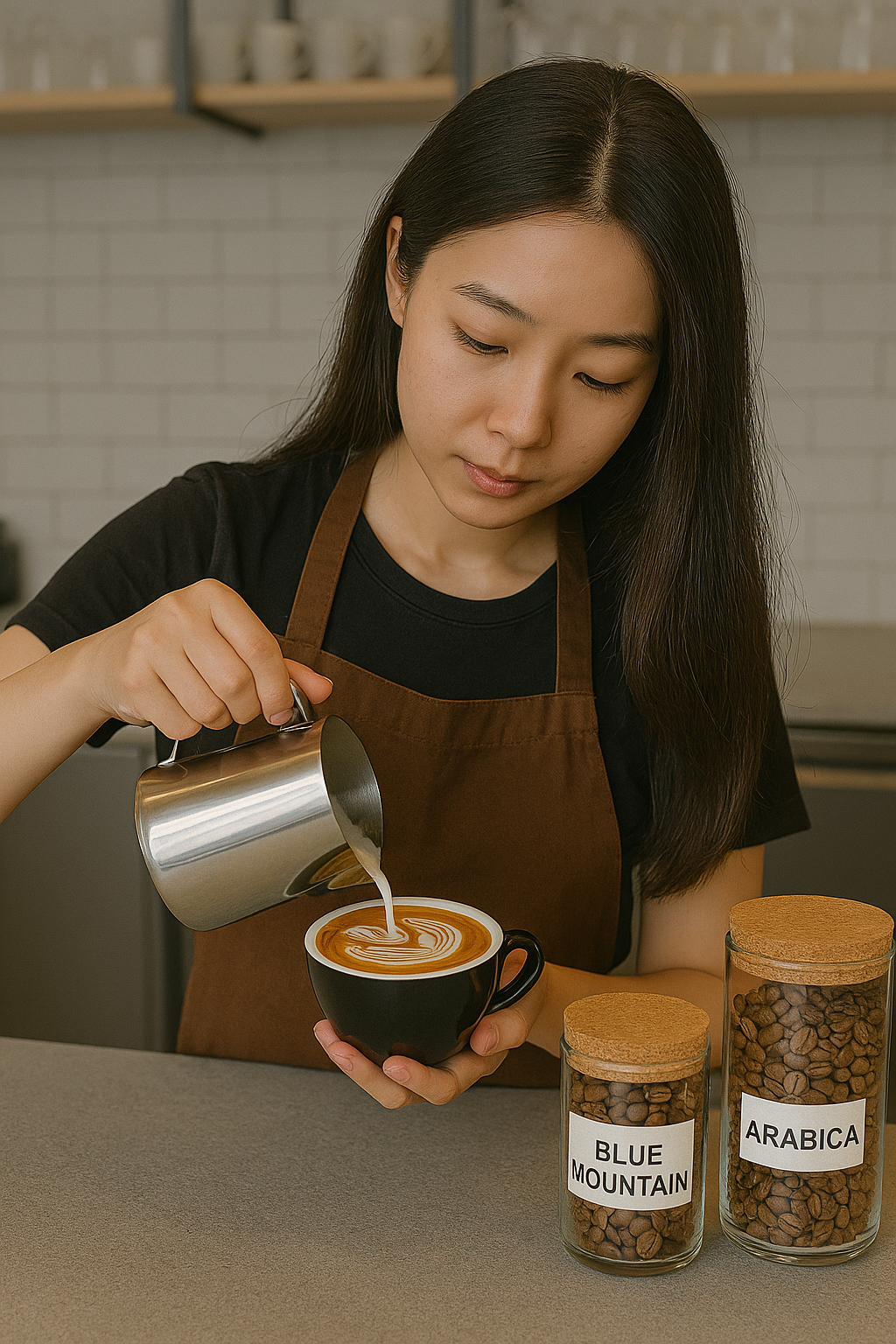Exploring the Origins Behind Premium SOE Single Origin Espresso
Wiki Article
Discovering the Abundant Flavors of Coffee Beans: a Deep Study Espresso and Blended Coffee Beans
When you discover the rich tastes of coffee beans, you reveal an intricate world where each selection brings its very own character to your cup. Understanding the origins, refining techniques, and roasting techniques can change your coffee experience. As you browse via the art of coffee and the creative thinking behind combined coffees, you'll begin to value the nuances that make each sip one-of-a-kind. What you'll discover following might transform the method you enjoy your early morning mixture.The Beginnings of Coffee Beans: Checking Out Terroir and Taste Profiles
When you take a sip of coffee, you're not just taking pleasure in a drink; you're experiencing an abundant tapestry of tastes formed by the beans' origins. Each area produces one-of-a-kind flavor accounts affected by dirt, environment, and altitude. Beans from Ethiopia frequently rupture with intense, fruity notes, while those from Colombia tend to use a well balanced, nutty sweetness.As you explore various beginnings, you'll notice exactly how terroir-- the ecological variables affecting a crop-- plays an important duty - Single Origin Espresso. The very same coffee variety can taste substantially various depending on where it's grown
When you think about these elements, you start to value the intricacy behind your mug. Each sip informs a tale of the land and the farmers that supported the beans. So, following time you indulge, believe concerning the trip your coffee took prior to it reached your hands, and savor those elaborate tastes that reflect its origin.
Comprehending Espresso: The Art and Science Behind the Mixture
When you consider espresso, it's not simply concerning the strong taste; it's also concerning the methods that bring it to life. Understanding exactly how various prep work techniques effect preference can transform your developing experience. Let's explore the complexities of coffee prep work and uncover the unique taste accounts that make each cup unique.Espresso Prep Work Techniques
Espresso prep work is both a science and an art, integrating precise methods with a deep understanding of coffee. To begin, you'll intend to pick top notch, newly baked beans and grind them carefully for optimal removal (Single Origin Espresso). The grind size is crucial; as well coarse, and your espresso will be weak, also fine, and it'll be bitterFollowing, tamp the grounds evenly in the portafilter to guarantee consistent removal. When you lock it right into the device, go for a brewing temperature level in between 190 ° F and 205 ° F.As you pull the shot, look for the perfect extraction time-- around 25-30 seconds. The outcome ought to be a rich, creamy coffee with a stunning layer of crema on the top. With method, you'll understand these methods.
Taste Profiles Clarified
The globe of espresso offers a rich tapestry of flavor profiles that can elevate your coffee experience. Light roasts frequently showcase brilliant acidity and vivid tastes, while dark roasts present much deeper, bolder tones.Understanding these profiles helps you select the best coffee for your palate. Try out various blends can expose shocking combinations. A well-crafted mix may harmonize the bright notes of an Ethiopian bean with the rich, chocolatey undertones of a Brazilian bean. Accept the journey of finding coffee's varied flavors, and you'll transform your coffee routine right into an amazing journey.
Handling Approaches: How They Impact Flavor and Scent
While it might appear that the origin of coffee beans is one of the most substantial consider identifying their flavor and aroma, the processing methods made use of post-harvest play a just as vital function. You'll find that these approaches can drastically alter the final taste account of your cup.For instance, the washed procedure removes the fruit from the beans before fermentation, often resulting in a cleaner, brighter flavor. The all-natural procedure leaves the fruit undamaged during drying, resulting in a sweeter, fruitier profile.
Various other methods, like honey processing, strike a balance, permitting some fruit mucilage to stay, supplying a special complexity.
Each handling method communicates with the beans' integral attributes, improving or muting details flavors and fragrances. When you sip that coffee or mixed coffee, keep in mind that the trip from cherry to mug is influenced not simply by origin but also by how those beans were processed.
Toasting Methods: Unlocking the Complete Potential of Coffee Beans
Roasting methods are essential for revealing the complete capacity of coffee beans, as they change raw, eco-friendly beans into the fragrant, delicious coffee you appreciate. The selection of roasting technique-- light, medium, or dark-- significantly influences flavor profiles. Light roasts preserve the beans' all-natural level of acidity and fruity notes, while tool roasts equilibrium sweetness and richness. Dark roasts, on the various other hand, stress bold, smoky flavors.You can explore toasting times and temperature levels to find your excellent brew. A slower roast at lower temperature levels allows for complex tastes to establish, while a quicker roast can heighten bitterness. Pay attention to the cracks throughout toasting; the initial fracture shows a light roast, while the second split signals a dark roast. By mastering these strategies, you'll disclose a globe of taste, boosting your coffee experience to new heights. Delight in every sip, understanding the treatment that entered into your mug!
The Magic of Blended Coffee: Producing Distinct Flavor Experiences
Developing an one-of-a-kind flavor experience with combined coffee can transform your early morning routine right into an expedition of preference. By incorporating different beans from various areas, you can expose a harmony of flavors that raise your cup to brand-new heights. Each mix offers a distinctive profile, balancing acidity, body, and sweet taste to develop something genuinely unique.When you pick a mix, you're not simply picking a coffee; you're selecting a trip throughout varied landscapes and societies. Trying out with different combinations enables you to find your personal faves, whether you appreciate fruity notes or rich, chocolatey touches.

Tasting Notes: Acknowledging the Nuances in Your Cup
As you drink your coffee, you could notice a spectrum of tastes dancing on your taste, each revealing the ins and outs of the beans. You might taste the bright acidity similar to citrus or the deep, abundant notes similar to dark delicious chocolate. The sweet taste could evoke honey or caramel, balancing the general account beautifully.Pay focus to the body of the coffee-- does it feel airy and light, or is it complete and velvety? The coating, also, offers clues; a remaining aftertaste may hint at nuttiness or flower touches.

Do not fail to remember to check out the special attributes of different origins, as each region imparts distinctive tastes - Single Origin Espresso. Ethiopian coffees commonly present fruity notes, while Colombian beans might display an extra spherical sweetness. By recognizing these subtleties, you'll grow your recognition for each mug, boosting your coffee experience to new elevations

Brewing Approaches: Optimizing Flavor Removal for every single Bean
When you check out the various developing techniques, you'll discover that each method can substantially affect the taste account of your coffee. From French press to pour-over, each method extracts various compounds, enhancing or silencing particular notes. Utilizing a French press permits oils to remain in the mixture, creating a richer preference, while pour-over highlights clearness and illumination.Temperature and grind size additionally play crucial functions. A coarser work works best for cool brews, while a great work is optimal for coffee. Explore water temperature-- between 195 ° F and 205 ° F-- can disclose covert tastes, too.
Don't neglect about soaking time; a fast extraction can cause sour notes, while over-extraction may generate bitterness. By changing these variables, you can make the most of taste removal and truly raise your coffee experience. Appreciate the journey of finding what approach best fits your taste buds!
Frequently Asked Questions
What Is the Suitable Water Temperature for Developing Coffee?
The ideal water temperature for brewing coffee's between 195 ° F and 205 ° F. If you use water that's too hot, you'll over-extract flavors; as well chilly, and you won't remove sufficient. Go for that pleasant area for the ideal brew!Just How Does Work Dimension Influence Coffee Flavor?
Grind dimension substantially affects coffee flavor. Better grinds extract much more oils and tastes, causing a bolder taste, while coarser grinds return a lighter taste. Changing work size helps you achieve your preferred coffee profile.Are There Health And Wellness Perks Related To Alcohol Consumption Coffee?

What Is the Distinction In Between Arabica and Robusta Beans?
Arabica beans are smoother and sweeter, often including fruity flavors, while robusta beans are stronger with a bitter taste and greater caffeine material. You'll discover these differences in fragrance and developing experience.Exactly How Can I Store Coffee Beans for Quality?
To save coffee beans for quality, keep Single Origin Espresso them in an airtight container, far from light, moisture, and heat. If you only grind what you require right before brewing., you'll preserve their flavor much longer.Checking Out the Rich Tastes of Coffee Beans: a Deep Dive Into Espresso and Blended Coffee Beans.
When you discover the abundant flavors of coffee beans, you uncover a complex globe where each variety brings its very own character to your mug.When you take a sip of coffee, you're not just delighting in a drink; you're experiencing an abundant tapestry of flavors formed by the beans' origins.Roasting techniques are crucial for exposing the complete potential of coffee beans, as they change raw, green beans right into the aromatic, savory coffee you enjoy.As you drink your coffee, you might see a spectrum of tastes dancing on your palate, each exposing the intricacies of the beans.
Report this wiki page